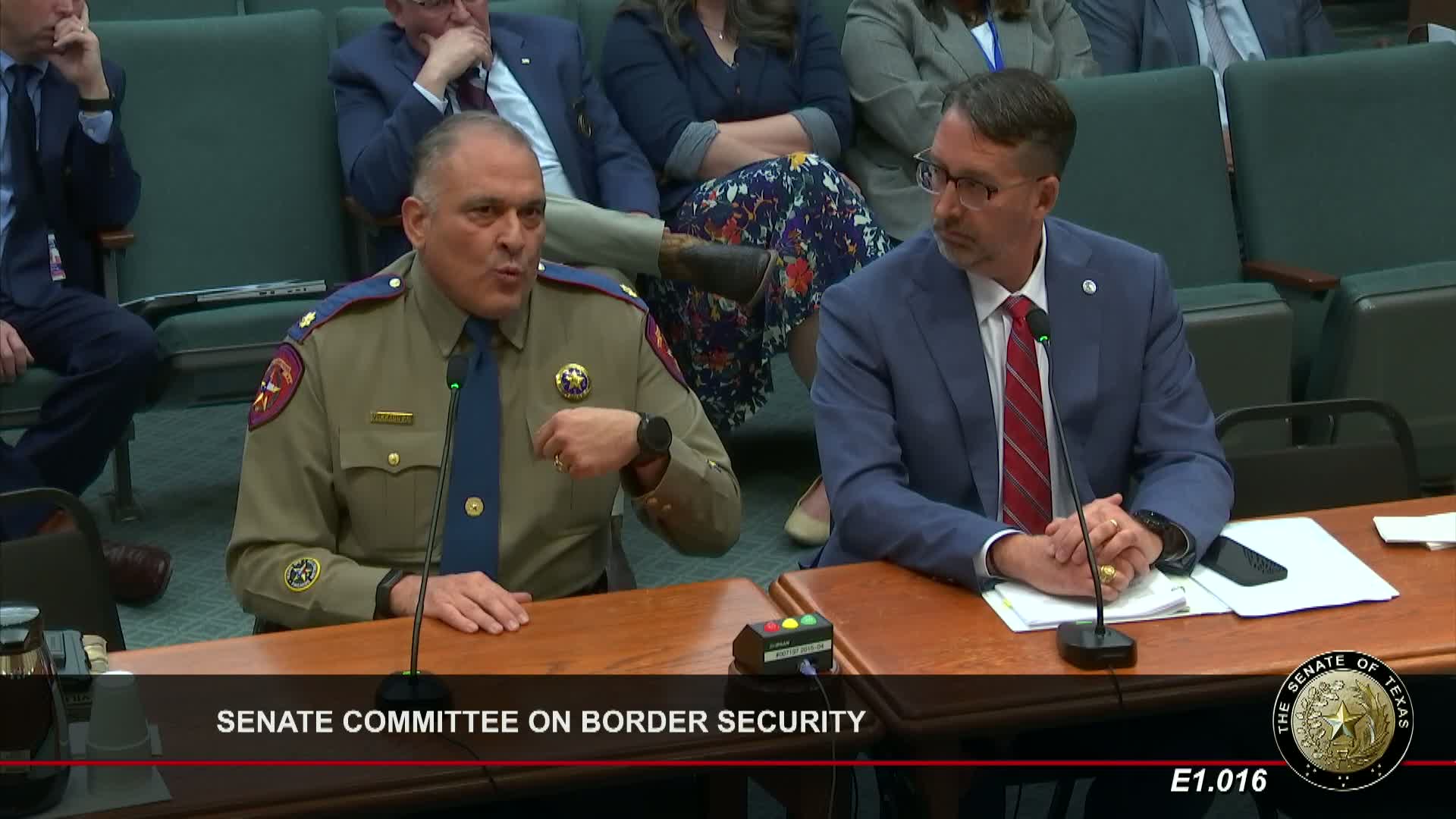Mexican authorities tighten fuel checks at border impacting Texas cargo tank haulers
April 10, 2025 | Committee on Border Security, Senate, Legislative, Texas
This article was created by AI summarizing key points discussed. AI makes mistakes, so for full details and context, please refer to the video of the full meeting. Please report any errors so we can fix them. Report an error »

In a recent meeting of the Texas Senate Committee on Border Security, a significant shift in cross-border fuel transportation was brought to light, highlighting the complexities of regulations and enforcement at the U.S.-Mexico border. As the sun dipped low over the Texas landscape, committee members gathered to discuss the implications of new measures taken by the Mexican government that could reshape the flow of fuel across the border.
The discussion centered around the operations of two-axle cargo tanks, which are commonly used by Mexican fuel haulers. These vehicles, capable of carrying a maximum load of 80,000 pounds, often purchase a Texas 15 47 permit, allowing them to legally transport up to 84,000 pounds. This permit grants them the freedom to cross various entry points, including Brownsville and Harlingen, without facing significant hurdles.
However, a recent clampdown by the Mexican government has introduced new challenges. The Mexican National Guard has established testing facilities at border crossings, where they are now inspecting fuel loads to ensure compliance with regulations. This move aims to combat the practice of falsifying shipping documents, where haulers misrepresent the type of fuel being transported to evade taxes. The committee learned that while reputable two-axle carriers are being waved through these checkpoints, three-axle cargo tanks are facing a different fate. Many of these vehicles are currently parked in Texas, hesitant to cross due to fears that their loads may not meet the required standards.
The implications of these developments are profound. The tightening of regulations on fuel haulers could lead to disruptions in supply chains and impact the availability of fuel in Texas. As the committee continues to monitor the situation, the balance between ensuring compliance and facilitating trade remains a critical focus. The unfolding scenario at the border serves as a reminder of the intricate dance between regulation and commerce, with both sides of the border feeling the effects of these new enforcement measures.
The discussion centered around the operations of two-axle cargo tanks, which are commonly used by Mexican fuel haulers. These vehicles, capable of carrying a maximum load of 80,000 pounds, often purchase a Texas 15 47 permit, allowing them to legally transport up to 84,000 pounds. This permit grants them the freedom to cross various entry points, including Brownsville and Harlingen, without facing significant hurdles.
However, a recent clampdown by the Mexican government has introduced new challenges. The Mexican National Guard has established testing facilities at border crossings, where they are now inspecting fuel loads to ensure compliance with regulations. This move aims to combat the practice of falsifying shipping documents, where haulers misrepresent the type of fuel being transported to evade taxes. The committee learned that while reputable two-axle carriers are being waved through these checkpoints, three-axle cargo tanks are facing a different fate. Many of these vehicles are currently parked in Texas, hesitant to cross due to fears that their loads may not meet the required standards.
The implications of these developments are profound. The tightening of regulations on fuel haulers could lead to disruptions in supply chains and impact the availability of fuel in Texas. As the committee continues to monitor the situation, the balance between ensuring compliance and facilitating trade remains a critical focus. The unfolding scenario at the border serves as a reminder of the intricate dance between regulation and commerce, with both sides of the border feeling the effects of these new enforcement measures.
View full meeting
This article is based on a recent meeting—watch the full video and explore the complete transcript for deeper insights into the discussion.
View full meeting
